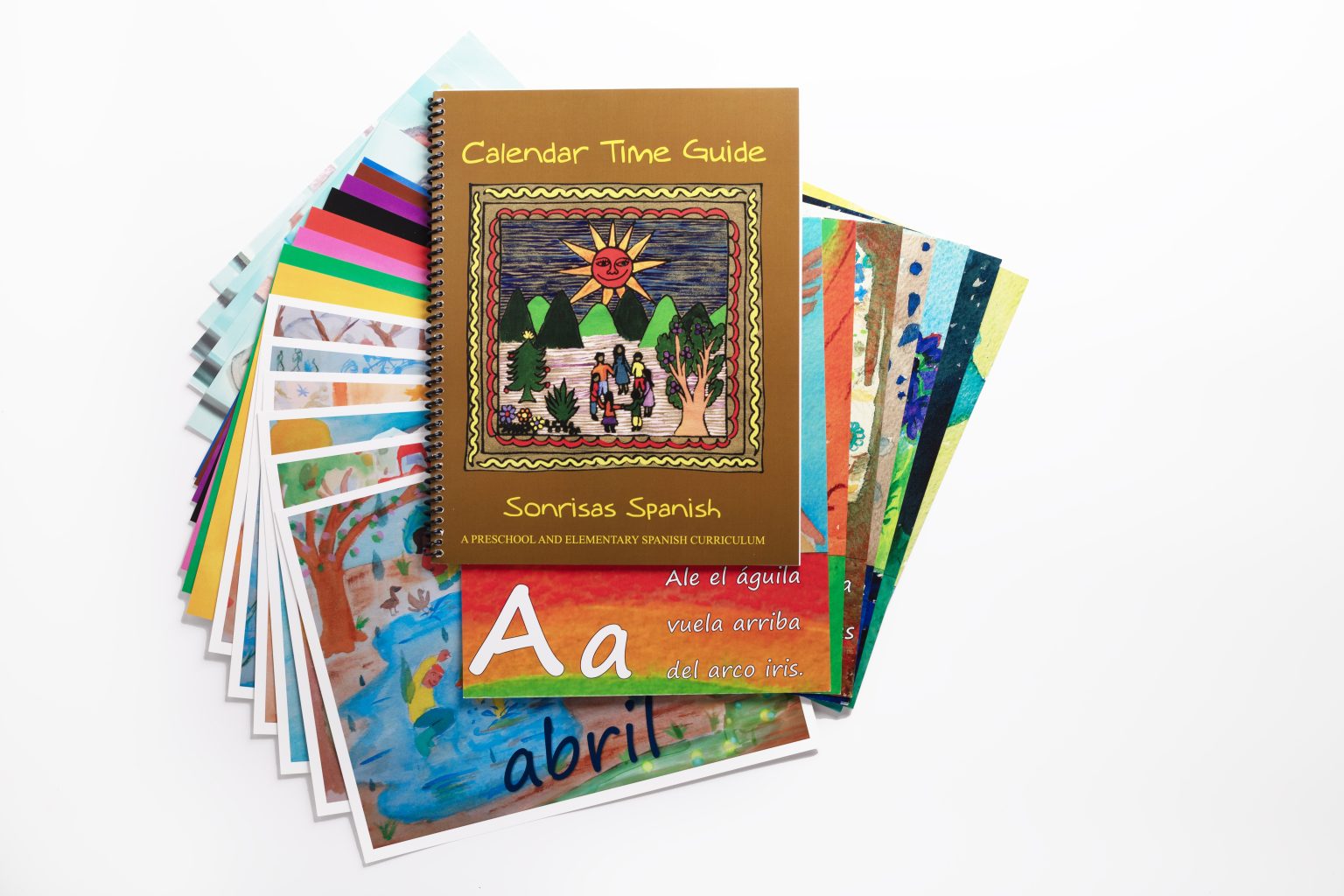
One of the best practices for using the Sonrisas Spanish Curriculum says, “Teach each level of the Sonrisas Spanish Curriculum for two years.” This means that you repeat the lessons from each level of the curriculum with any given group of students For example: if you teach a group of kindergartners all 35 lessons from Sonrisas Level I, the following year, when they are in 1st grade, you will return to Lesson 1 of Sonrisas Level I and repeat all 35 of the lessons with that group of students.
We designed the Sonrisas Curriculum this way because we know that learners need this repetition. It is valuable and beneficial for them. Practically speaking, students use their prior knowledge from the first year of instruction to take their learning to a deeper level in the second year of instruction. Your students’ level of acquisition increases profoundly with this kind of repetition. Most Sonrisas lessons include several performance targets. Students may not master all of the performance targets in the first year of instruction, but will most likely achieve proficiency with all of them by repeating the lessons.
Many teachers have a hard time thinking about repeating the same lesson with a group of students, but there are several ways that you can differentiate the lessons in the second year of instruction. You can read a different storybook. You can do a different art project. Probably the most significant differentiation is to expand on the calendar time activities using the Calendar Time Guide and the classroom posters.
The book suggestions for each lesson in Sonrisas Level I and Sonrisas Level II usually include several titles. All of the titles are related to the theme of the lesson and can help reinforce the performance targets for the lesson. Remember that when you read the storybook during the Story Time segment of the lesson that you want to use the storybook as a tool to extend your communication. Reading a different storybook in the second year of instruction is a great way to develop students’ knowledge of the performance targets. You also expose them to more voices and styles of Spanish.
Most of the Level I and Level II lessons include more than one art project. This gives teachers options when implementing the lesson. An easy way to differentiate in the second year of instruction is to do a different art project. All of the art projects are related to the theme of the lessons. During the Art Time segment of the lesson, you can have one-on-one conversations with students, in Spanish, about what they are working on. When you do a different art project in the second year of instruction, these conversations will be different. Your students will benefit from this, and their opportunity for acquisition increases.
The Calendar Time Guide and the classroom posters provide an excellent tool for differentiating the lessons in the second year of instruction. In the first year of instruction, you may want to keep your calendar routine very simple by just doing the four daily questions of:
Then in the second year of instruction you can expand on this routine and add in more of the activities around these themes. You can also begin to teach the Spanish alphabet with the activities in the guide and the alphabet posters. There are also activities for each of the Spanish-speaking countries. These provide an excellent opportunity to integrate culture and geography into your Calendar Time routine.
When you expand your calendar routine, you increase the opportunity for acquisition by challenging students and exposing them to new content. Students learn new vocabulary and phrases and begin to communicate on new topics.
For Sonrisas Level III, the need for differentiation may not be as great because there is enough content in Level III to last for up to two years. The TPRS stories almost always end up taking more time that what is written in the lesson plans, so the content stretches beyond the 70 lessons (7 units with 10 lessons each). Then, after two years of instruction with Sonrisas Level III, middle school students can continue with the new Level III Book 2 Curriculum.
If you do end up completing all of Sonrisas Level III in one school year, you will want to repeat it for a second year. You have several ways you can differentiate in the second year:
Each TPRS story, with each group of students, is unique. This follows for a group of students which is repeating a story that they did before. They will remember the story from the first time they did it, and they may want to do the same characters and the same details. Don’t do this. Steer them in a new direction. In this way they will learn new vocabulary, and your communication with them throughout the story will be new and different. The opportunity for acquisition and proficiency will increase.
Each lesson in Sonrisas Level III begins with a spelling activity. If you are doing a second year of instruction for Level III, choose different spelling words for the students to do. Challenge them by increasing the complexity of the spelling words.
This can be a very meaningful differentiation. Encourage students to partner up with a different classmate than the one that they chose in the first year of instruction. Students benefit when they interact with different peers. Their communication will change. They will be challenged to adapt and negotiate meaning, and this experience will approximate a more real-world scenario.
Even if you don’t differentiate in the second year of instruction, your students will benefit. Repetition of lessons increase language acquisition by helping students feel more comfortable, confident, and excited about the lessons because they are familiar with them. It puts their brains in a more receptive state for learning. The confidence instilled by spiraling through previously learned concepts helps students more readily learn new concepts and take their learning to a deeper level.

